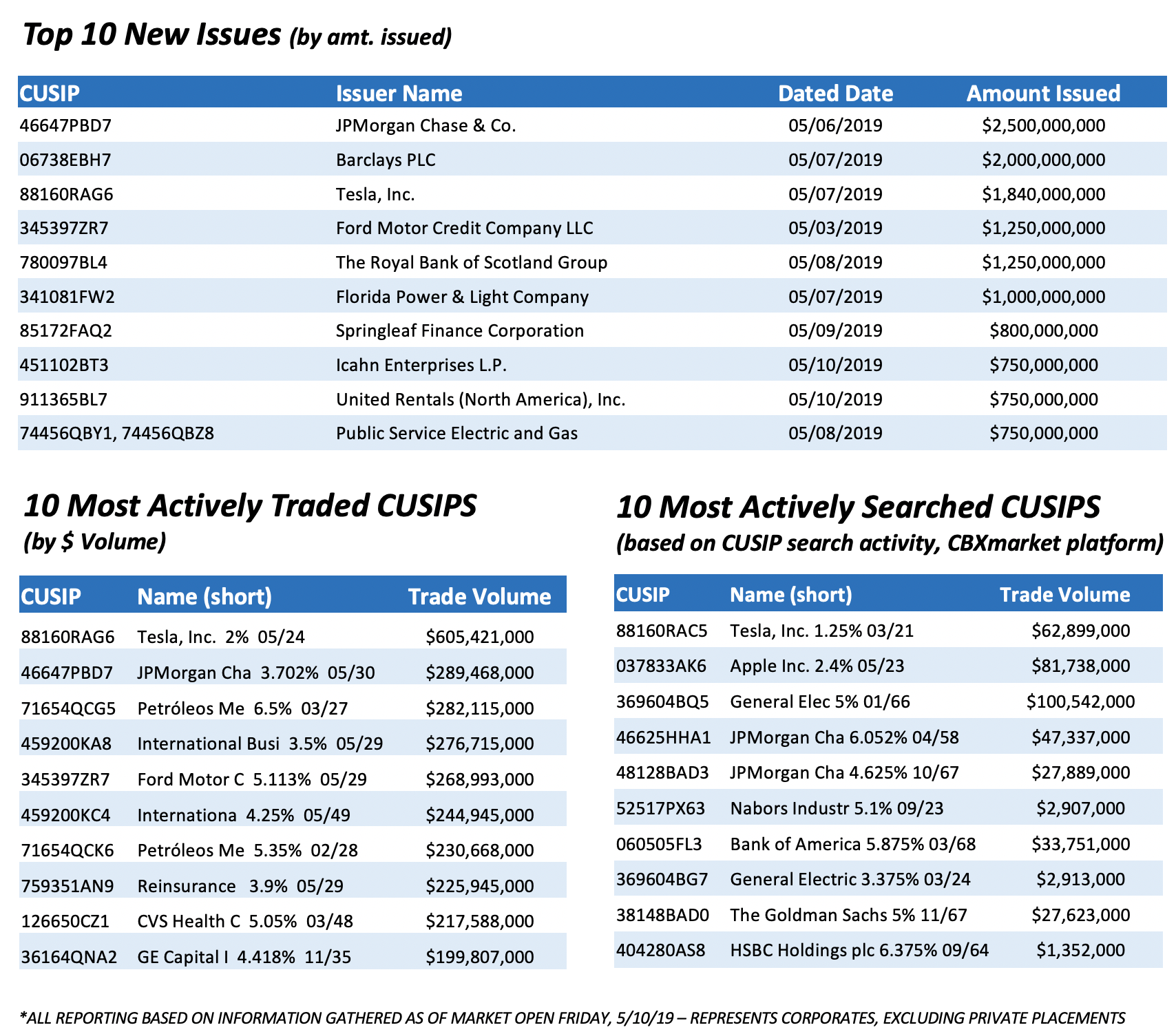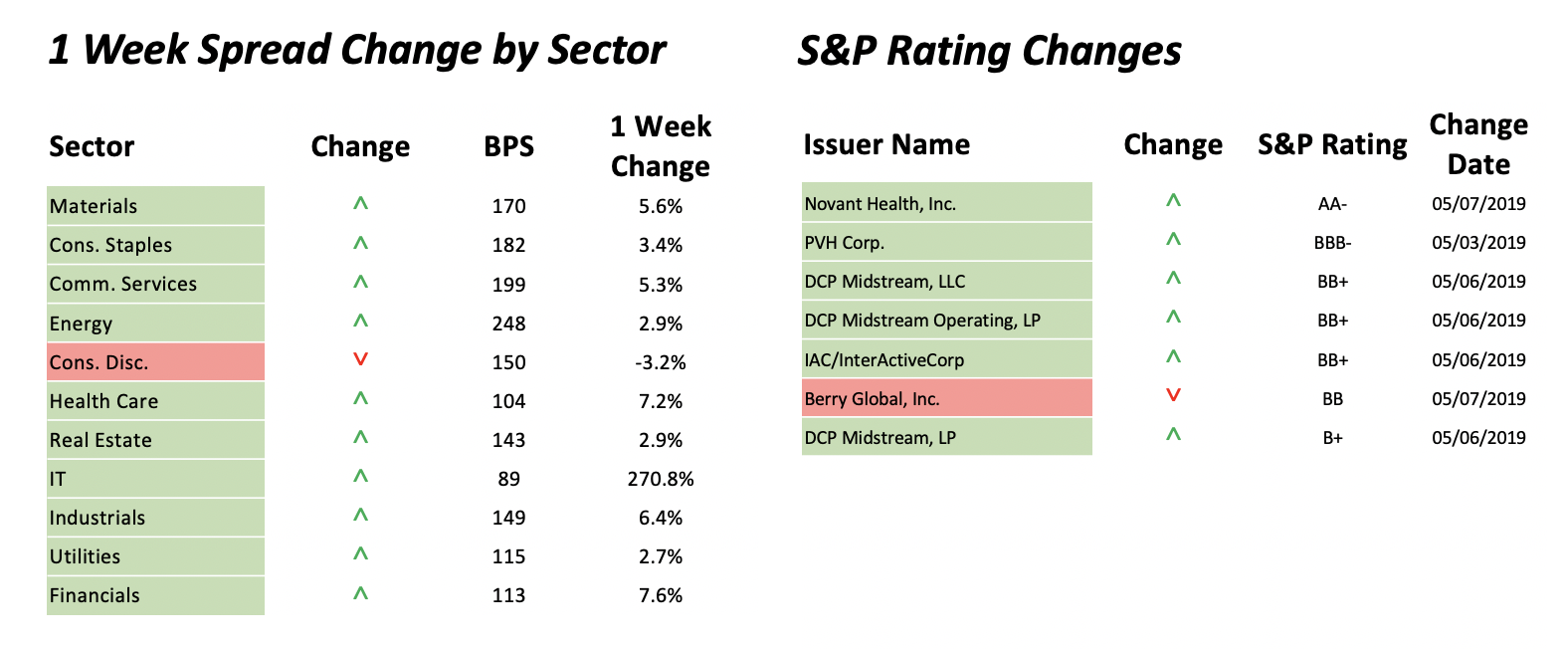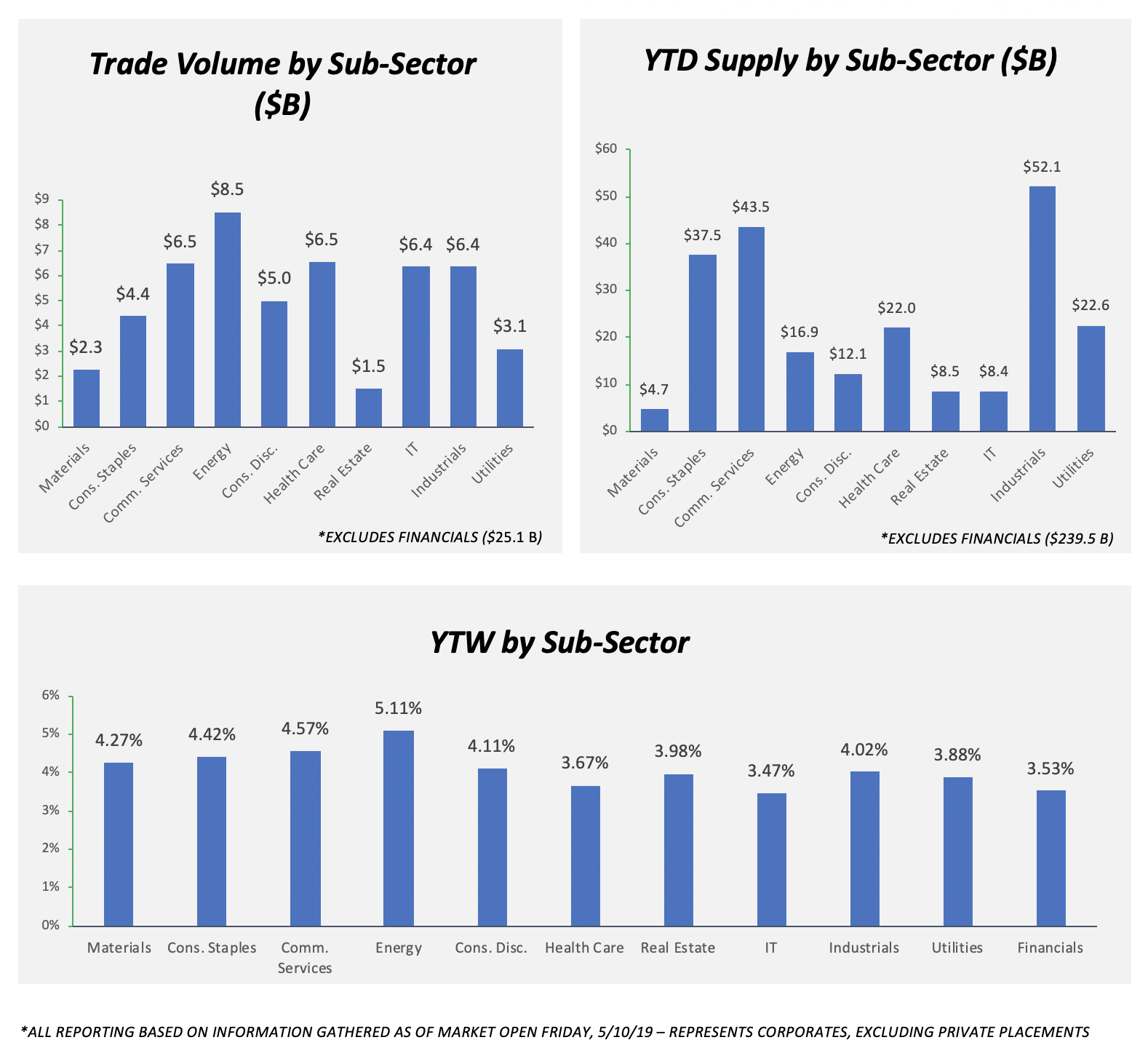Weekly Market Update 5.9.19

After two days of massive selloffs that wiped out an estimated $500bn in US equities, the S&P 500 traded flat at market open on Wednesday, and investors remained risk averse while waiting for stock markets to stabilize. Ahead of US-China trade talks beginning May 9, President Trump took to Twitter Sunday evening and threatened to increase tariffs on $200bn worth of Chinese goods, raising rates from 10% to 25%. Reacting to this catalyst, US stocks continued weathering volatility through Tuesday, as Boeing—the largest US exporter to China—fell 3.9%, and Apple fell 2.7%, according to Reuters.
Amid escalating trade tensions and headlines that contributed to uncertainty, Bloomberg reported that investors remained cautious and sought refuge in fixed income. Demand for government paper picked up while yields on 10-year Treasuries fell to 2.44% Tuesday, slightly rebounding to 2.48% Wednesday afternoon, Reuters noted. International wires indicated that the $38bn Treasury auction of three-year notes received the lowest yields for that maturity in 16 months.

The Treasury’s $84bn quarterly refunding program continues with auctions Wednesday and Thursday, selling $27bn 10-year and $19bn 30-year notes, respectively. Later this week, a “crucial” inflation updated is slated for Friday, as Bloomberg indicated that CPI data will likely show increased inflation. Despite White House pressure, market players don’t anticipate the Fed slashing rates to stave off economic downturn anytime soon; still, a quarter-point cut should be fully priced in by mid-2020, according to various news reports.







